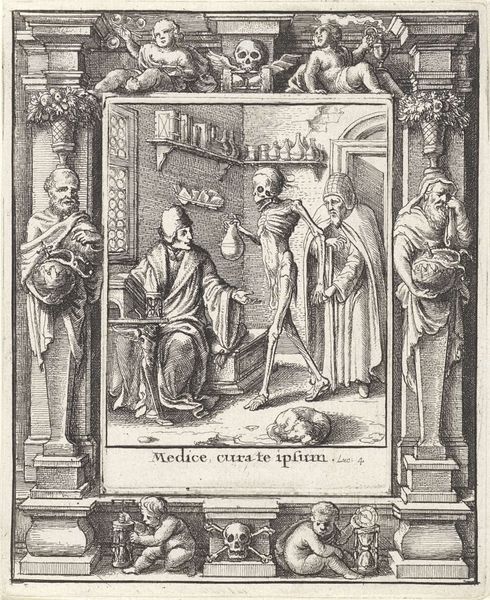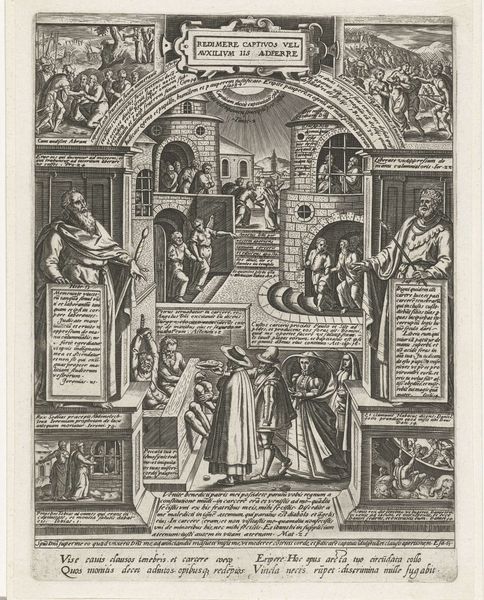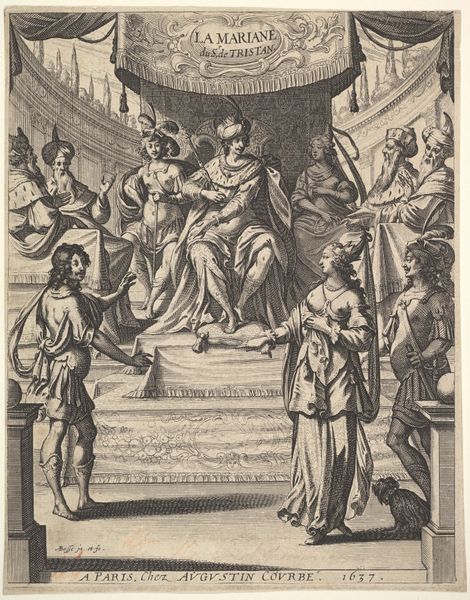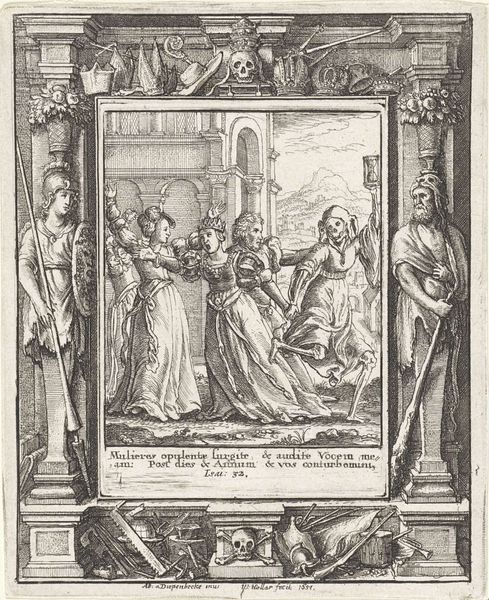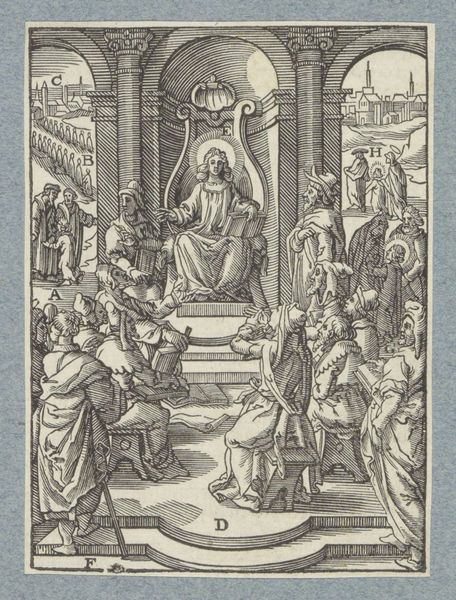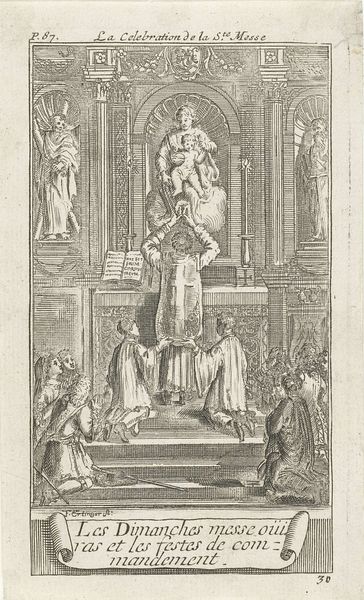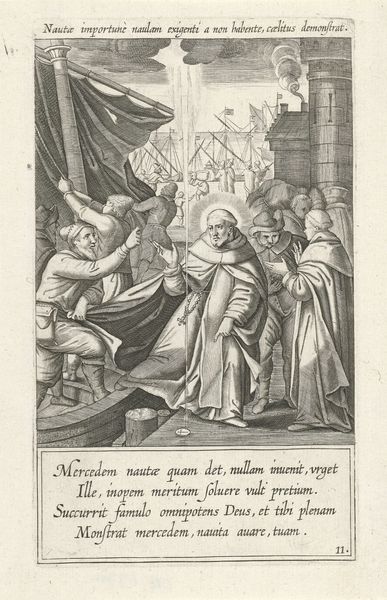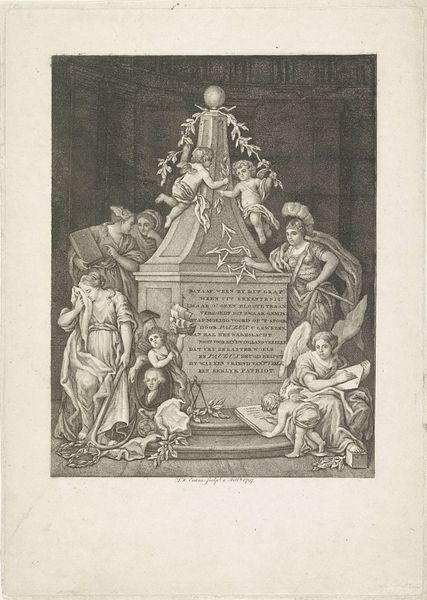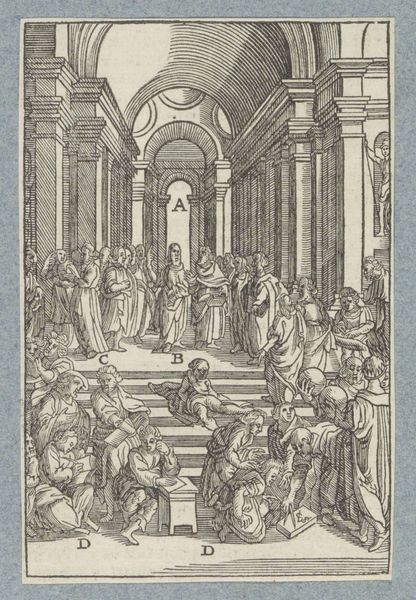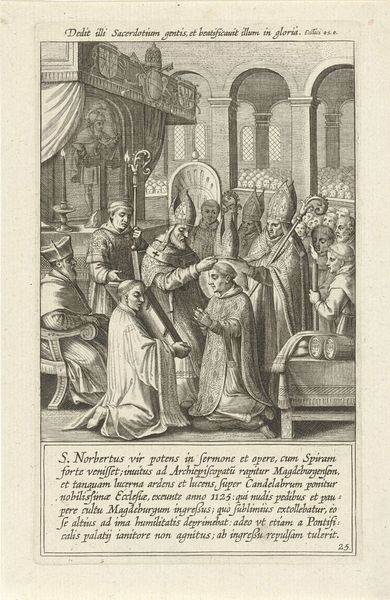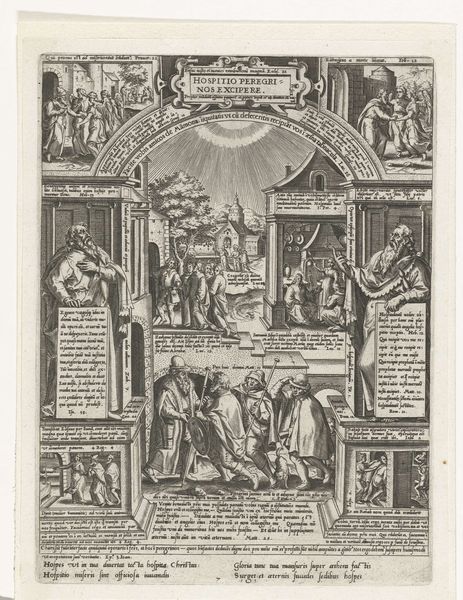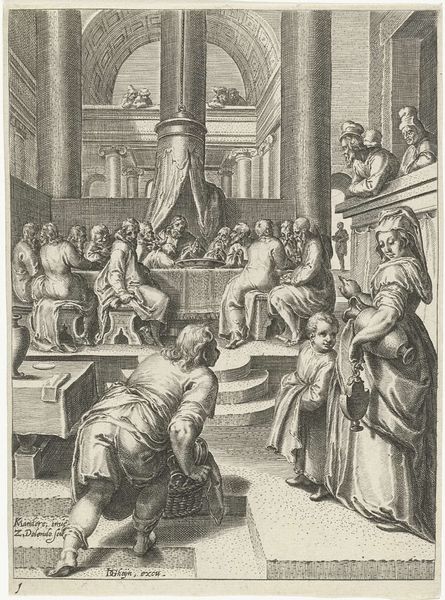
print, engraving
#
portrait
#
baroque
#
pen drawing
# print
#
figuration
#
line
#
genre-painting
#
history-painting
#
engraving
Dimensions: height 333 mm, height 235 mm
Copyright: Rijks Museum: Open Domain
Editor: Here we have "Kerkinterieur met eucharistieviering," or "Church Interior with Eucharist" by Simon van de Passe, created around 1629. It's a detailed engraving, and I’m immediately struck by how it manages to feel both grand and intimate at the same time. What’s your interpretation of this work? Curator: Well, the Baroque period was a time of immense religious and political upheaval. Images like these weren't just depictions of church interiors; they were often strategic endorsements of particular theological and political positions. Consider the opulence; what does that suggest about the message being conveyed to the viewer regarding the Catholic church's power and authority? Editor: I guess the scale of the church and the rich robes emphasize the power. But I wonder how people outside that inner circle perceived these kinds of displays, especially considering some of the period's emerging social inequalities. Curator: Precisely. The question of access and privilege is key. The image meticulously presents a hierarchical society with distinct roles, but let’s not forget the Reformation's influence at this time. Do you see visual clues suggesting any tensions related to that? How might it function as propaganda? Editor: I suppose the very structured nature of the composition, and the careful detail in portraying the ceremony, might be an attempt to reinforce traditional roles and power structures amidst challenges to them. Curator: Exactly! So this print becomes more than just a snapshot of a religious event. It’s a visual argument, participating in a broader conversation about power, faith, and social order. It prompts us to consider who is included and who is excluded. Editor: That’s a great perspective! I see it now. Thinking about art as participating in this historical argument really brings it to life. Thanks. Curator: And understanding how visual rhetoric was, and is, employed is vital for interpreting any work! A pleasure to share.
Comments
No comments
Be the first to comment and join the conversation on the ultimate creative platform.
